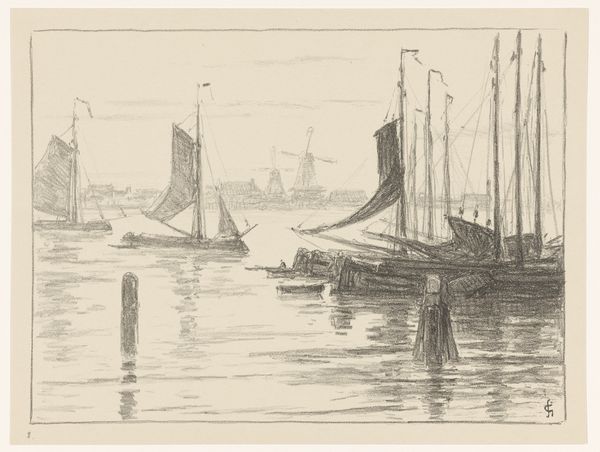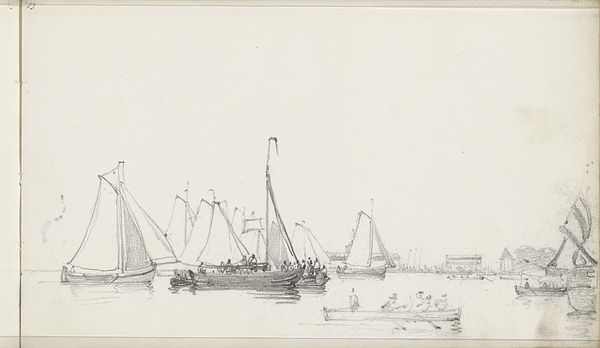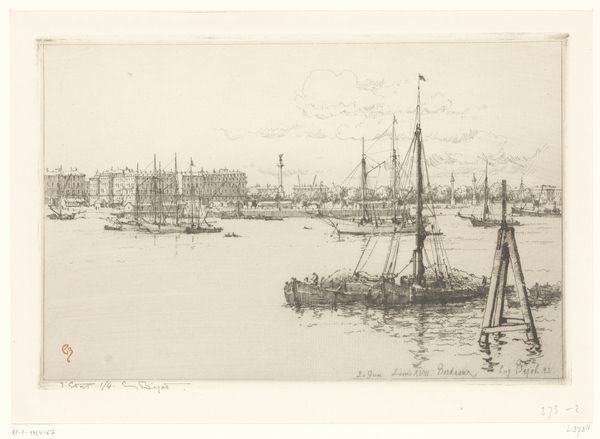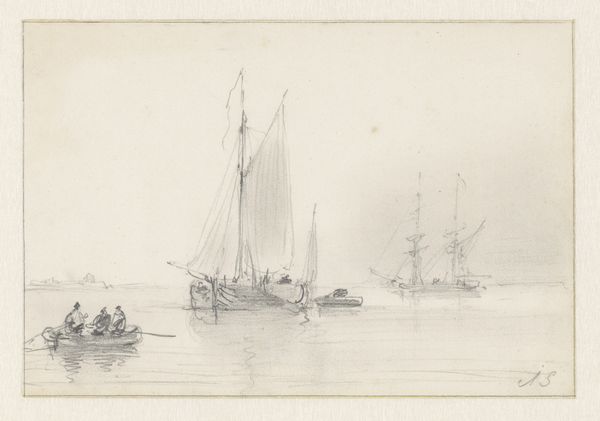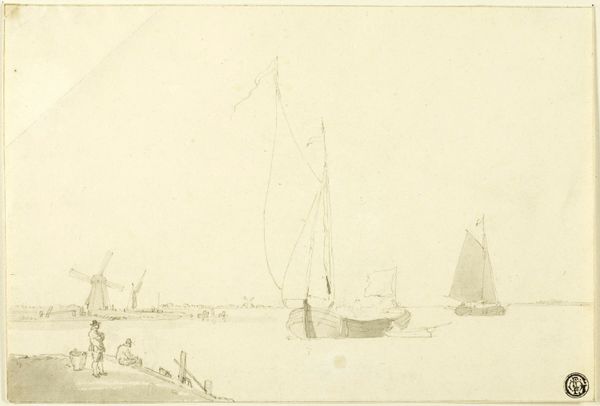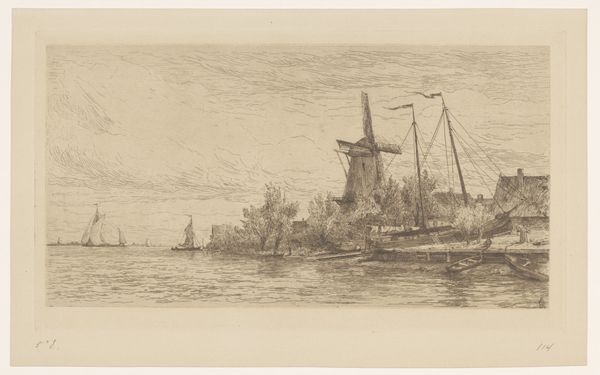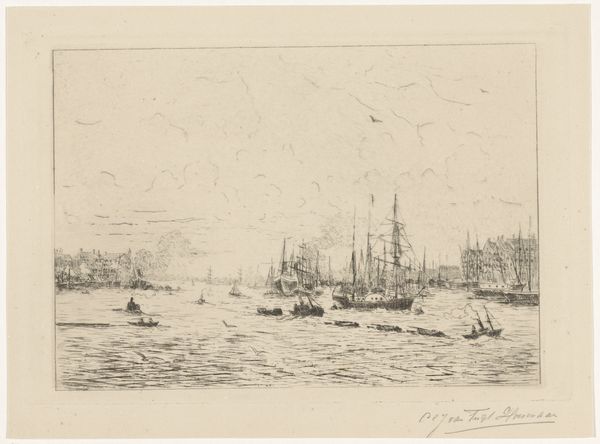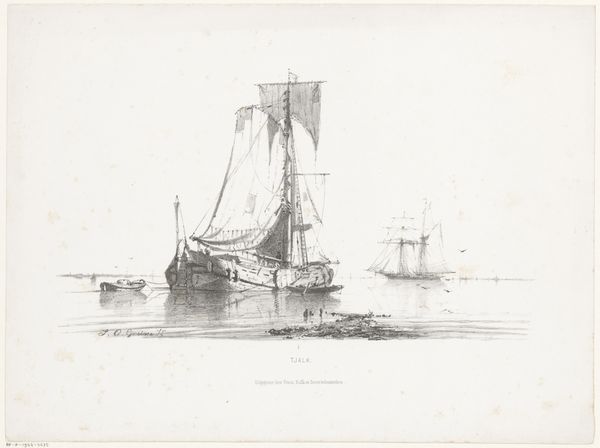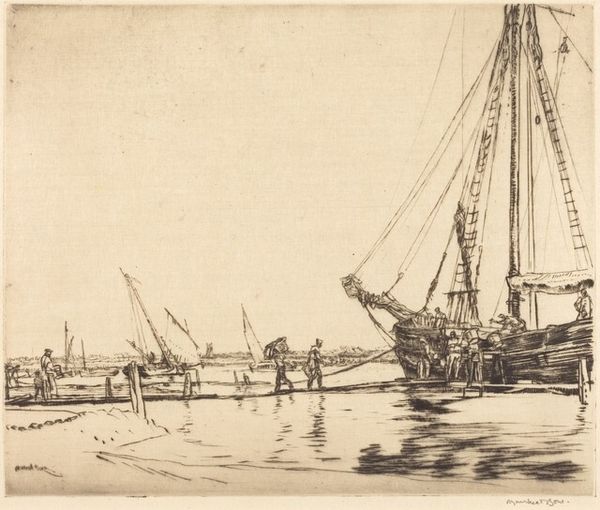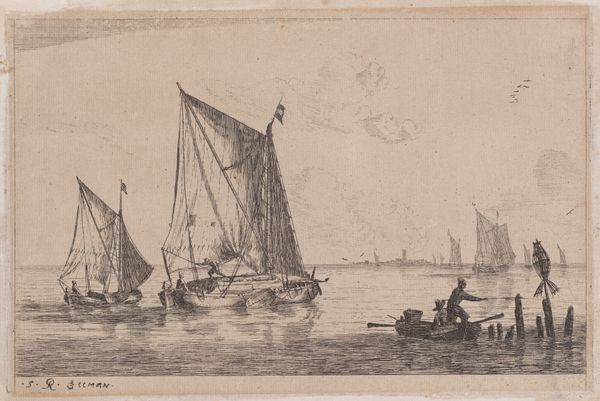
drawing, print, ink
#
drawing
# print
#
landscape
#
ink
#
line
#
cityscape
#
realism
Dimensions: 127 mm (height) x 178 mm (width) (bladmaal)
Curator: Here we have "Udsigt over Seinen (?)"—or "View over the Seine (?)"—an ink drawing from somewhere between 1865 and 1941, currently held here at the SMK. Editor: The eye certainly moves dynamically across the surface. My initial impression is how airy and open the composition feels, despite the density of detail, particularly with those vessels and structures sketched onto the page. Curator: It's intriguing to consider how a seemingly simple cityscape can become a window into understanding societal shifts, in regards to industry and environmental awareness in the timeframe within which this work was created. Editor: Indeed. The artist uses line with incredible efficiency, evoking both form and texture with minimal strokes. Consider the variations in line weight, how they define the curvature of the boat hulls and the weight of the architecture in the distance. Curator: And one might ponder how this specific view—perhaps unintentionally—echoes themes of progress and its discontents. The smoke plumes from the steamboats, a testament to industrial advancement, but also a stark indicator of impending ecological damage. It causes reflection upon who benefits from that progress, and who pays the environmental and social costs. Editor: That contrast between the industrial elements and the classical dome is striking; the rigid, vertical lines of the ships juxtaposed against the dome's soft, enveloping form is a marvelous balance. It does feel significant—this juxtaposition. Curator: And thinking about public access to the river at the time of this work's creation raises questions about who had the privilege to witness such a view. Were the docks primarily spaces for the working class, or also locations where elites and emerging bourgeois groups could converge and contemplate the city's growth from the river’s edge? The artist’s gender, economic class, and political views undoubtedly influenced the portrayal of this view. Editor: These observations enrich the artwork's visual language, and the stark monochrome palette helps amplify those linear contours, contributing to the sense of immediacy—as if the scene were captured in a fleeting moment. Curator: I think, viewing the work again, one's gaze is invited to contemplate themes of labor, class, and urban transformation as witnessed and translated through an individual artist's perception. Editor: It is hard to disagree with that contextual appreciation; however, the formal interplay of these forms contributes in equal measure to an engaging aesthetic experience.
Comments
No comments
Be the first to comment and join the conversation on the ultimate creative platform.


